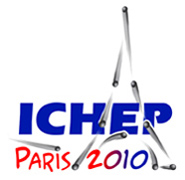Speaker
Silvia Borghi
(University of Glasgow)
Description
LHCb is a dedicated experiment to study new physics in the decays of beauty and charm hadrons at the Large Hadron Collider (LHC) at CERN. The beauty and charm hadrons are identified through their flight distance in the Vertex Locator (VELO), and hence the detector is critical for both the trigger and offline physics analyses.
The VELO is the silicon detector surrounding the interaction point, and is the closest LHC vertex detector to the interaction point, located only 7 mm from the LHC beam during normal operation. The detector will operate in an extreme and highly non-uniform radiation environment. The VELO consists of two retractable detector halves with 21 silicon micro-strip tracking modules each. A module is composed of two n+-on-n 300 micron thick half disc sensors with R-measuring and Phi-measuring micro-strip geometry, mounted on a carbon fibre support paddle. The minimum pitch is approximately 40 µm. The detector is also equipped with one n-on-p module. The detectors are operated in vacuum and a bi-phase C02 cooling system used. The detectors are readout with an analogue front-end chip and the signals processed by a set of algorithms in FPGA processing boards. The performance of the algorithms is tuned for each individual strip using a bit-perfect emulation of the FPGA code run in the full software framework of the experiment.
The VELO has been commissioned and successfully operated during the initial running period of the LHC. The detector has been time aligned to the LHC beam to within 2 ns, and spatially aligned to 4 µm. The halves are inserted for each fill of the LHC once stable beams are obtained. The detector is centred around the LHC beam during the insertion through the online reconstruction on the primary vertex position. Preliminary operational results show a signal to noise ratio of 20:1 and a cluster finding efficiency of 99.6 %. The small pitch and analogue readout, result in a best single hit precision of 4 µm having been achieved at the optimal track angle.




